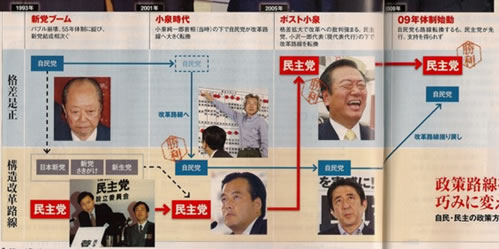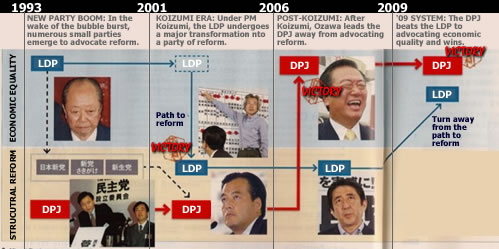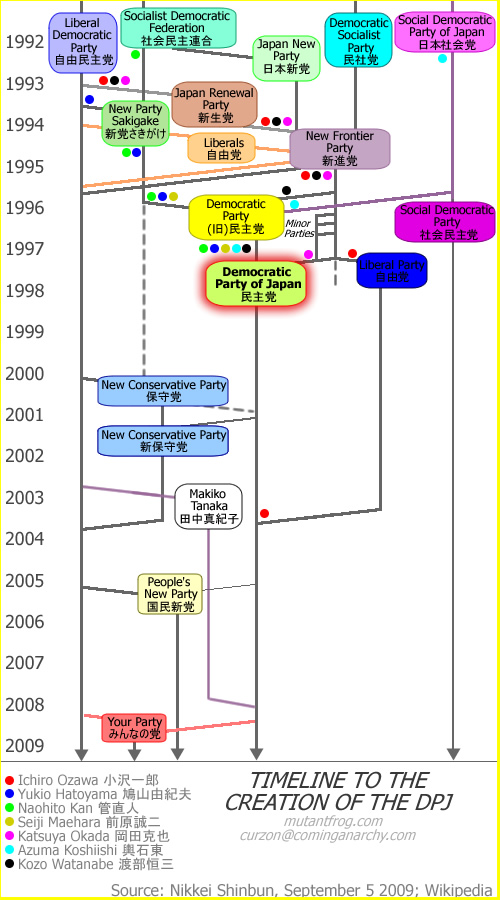The Nikkei Business Magazine is a weekly print publication that is perhaps the Japanese equivalent of the Economist. In a recent article, they produced the following chart in their cover article to explain one context of the two parties in Japan — instead of the banal left v.s. right, liberal v.s. conservative, salaryman v.s. farmer dynamic, the article looks at the dynamic between the party promoting economic equality and the party promoting structural reform.

Click image for a larger version of the scan.
To ensure that everyone can understand this post and participate in the discussion in the comments, I’ve translated the chart:

The Nikkei narrative goes something like this: following the bubble bursting in the early 90s, the LDP advocated economic stability and maintaining economic equality instead of structural reforms. Many reformers inside the LDP left the party to form a number of smaller parties. (For more context, see my recent post on the graphical timeline of the DPJ.)
However, several years later it was Koizumi who transformed the LDP in a party that advocated structural reform. In some ways this undermined the DPJ’s core platform and brought the pro-Koizumi members of the LDP to overwhelming victories. But after the Koizumi era, the DPJ effectively turned itself into the party that would correct the inequities of the Koizumi structural reforms, and the LDP old guard, never comfortable with being the party of reform in the first place, waffled on the issue of economic equality v.s. structural reforms until it abandoned the reform platform before the election — but too late to benefit from the shift in the public’s concern.
This type of fluctuation in the policies and philosophies between competing political parties isn’t new — it’s a natural development in party politics that political scientists call realignment. (To note one clear example for US readers, the Democrats were the dominant political party in the conservative South for a century from the 19th century until the 1960s, after during which time there was a slow reversal that resulted in the region becoming a stronghold of the Republican Party — the names of the parties didn’t change, but their constituents did.) That being said, it’s depressing to read an analysis that ultimately concludes that with the exception of the charismatic Koizumi, the party advocating the status quo and rejecting structural reforms is the party that wins.
DPJ supporters want to believe that the DPJ is still the party of reform. I wish this was the case — but as I see it, the DPJ is getting the little things right and the big things wrong. Minor improvements such as ending the kisha club system that grants preferences to big media and allowing married couples to keep separate names are welcome reforms. But as of this morning, the leadership appears to agree with Kamei Shizuka that borrowers should be able to skip repayments on loans, which will spread the “zombie company” phenomenon to Romero-esque levels. That’s definitely a policy heavily favoring so-called economic equality and not structural reform.






